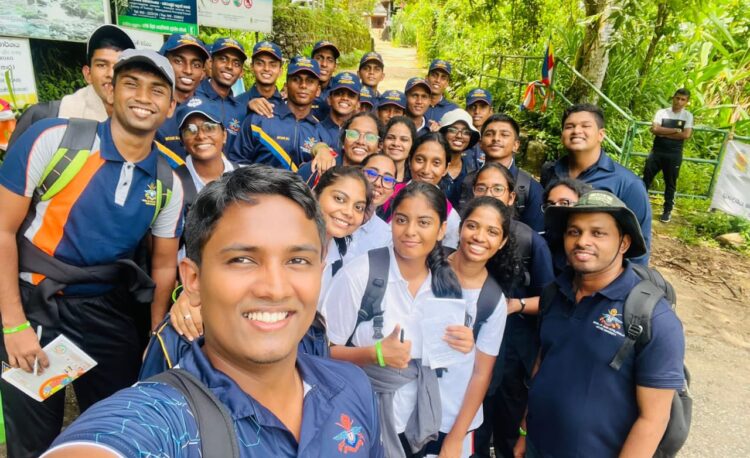Siripa Sathkaraya: A Pioneering Environmental Initiative by CDMR
In May 2024, the Centre for Disaster Management Research (CDMR) at KDU launched its flagship initiative, Siripa Sathkaraya, a project aimed at addressing environmental issues surrounding Adam’s Peak through three main aspects: educating the public, organizing large-scale clean-up efforts, and conducting groundbreaking research. Conceptualized as the brainchild of CDMR, this initiative integrates these components to both protect the sacred site and explore behavioral patterns contributing to environmental degradation.
Education Campaign: Mobilizing Awareness from Colombo to Adam’s Peak
The awareness campaign kicked off at Colombo Pettah Railway Station and extended along the pilgrimage routes to Adam’s Peak. This massive effort was organized and executed by the Faculty of Defence and Satergic Studies, the KDU Rotaract Club, and the KDU National Rover Crew, in partnership with Derana Media. The campaign covered the Hatton-Nallathanniya, Palabaddala, and Kuruvita routes, where volunteers engaged the public in various awareness activities.
Participants conducted street dramas, traditional songs, Anda Bera (drumming performances), and held signboard demonstrations emphasizing the importance of protecting Adam’s Peak from plastic waste. These efforts were aimed at raising awareness among pilgrims about the harmful impact of non-degradable waste and urging them to adopt more environmentally responsible behavior during their sacred journey.
A comprehensive media campaign supported the awareness drive, which included active participation on social media platforms. This aspect of the project was coordinated by Media unit of KDU. Their efforts ensured that the message reached a broader audience, further amplifying the campaign’s impact.
Clean-Up Drive: Remarkable Results on the Second Day
On the following day, May 18th, starting at 7:30 AM, volunteers and teams from the entire KDU student population began a large-scale clean-up operation. Beginning from the Uda Maluwa at the peak, they descended the Hatton-Nallathanniya, Palabaddala, and Kuruvita routes, collecting and removing plastic waste left behind by pilgrims.
This clean-up effort yielded remarkable results, with a significant reduction in plastic waste compared to typical busy pilgrimage days. The successful awareness campaign conducted the previous day clearly influenced pilgrim behavior, resulting in less litter and a cleaner environment along these sacred paths.
Research: Understanding Human Behavior Behind Waste Disposal
In parallel with the awareness and clean-up activities, CDMR conducted a comprehensive research study to better understand the waste disposal behaviors of pilgrims. Four research teams were assigned to the pilgrimage routes—Nallanthanniya, Palabaddala, and Kuruvita—led the data collection efforts. These teams were composed of 40 researchers and headed by experienced social science researchers: Mr. MMLC Gunathilake (Faculty of Management, Social Science and Humanities) , Ms. DD Lokuge (Faculty of Management, Social Science and Humanities) , Mr. T Prashanthan (Faculty of Technology) , and Mr. MAJ Gimantha (Faculty of Defence and Strategic Studies) of KDU.
Over the course of two days, the teams conducted more than 400 interviews with pilgrims to investigate why people continue to dispose of waste irresponsibly, despite being aware of the environmental consequences. The researchers also sought to identify practical solutions from the pilgrims themselves regarding how to best address the issue of plastic waste at Adam’s Peak. Different research instruments and methodologies were employed by each team, tailored to the characteristics of the pilgrims and routes they engaged with.
Data Analysis and Future Impact
CDMR is currently analyzing the extensive data collected from the research study. The insights gained will help identify the root causes of irresponsible waste disposal and develop effective solutions for the future.
The ultimate goal is to produce a comprehensive Adam’s Peak Solid Waste Management Manifesto, which will outline actionable guidelines for sustainable waste management at the sacred site. This manifesto will serve not only to protect Adam’s Peak but also as a global model for similar initiatives at other sacred and environmentally sensitive sites.
Through the Siripa Sathkaraya initiative, CDMR has demonstrated its commitment to both disaster resilience and environmental sustainability, contributing to the broader global dialogue on preserving natural and sacred sites for future generations.











